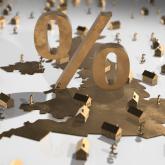PRIME AGRICULTURAL LAND IS STILL MUCH IN DEMAND – AND THEY’RE NOT MAKING IT ANYMORE
Published 25 July 2020
 In times of economic turmoil – and they don’t come much more tumultuous than right now – investors will always seek safe homes for their cash. And that invariably means seeking out commodities which are limited in supply, and which cannot be wiped out by the stroke of a computer key or the vagaries of a fickle market.
In times of economic turmoil – and they don’t come much more tumultuous than right now – investors will always seek safe homes for their cash. And that invariably means seeking out commodities which are limited in supply, and which cannot be wiped out by the stroke of a computer key or the vagaries of a fickle market.
It is why gold is always seen as a safe haven in times of crisis. And it is why land, and in particular good quality agricultural land, will always be sought after, even in the toughest financial times. As the old saying goes, they’re not making land anymore, so its supply is by definition limited.
Figures published by Farmers Weekly show that across the UK, the amount of farming land currently on the market is down by a staggering 60 per cent against this time last year. Perhaps it’s a fear that they won’t gain the maximum value if they sell now, but potential vendors do seem to be sitting tight and waiting to see if the current choppy waters become a little calmer.
Small wonder that when prime agricultural land does come onto the market, buyers are competing with each other to snap it up – with a healthy effect on prices. You might think that with the triple whammy of Brexit, Covid-19 and the change in the subsidy regime, the attraction of investing in farming land might have waned.
But not only is such land a safe investment, unlike gold it can also return a good ongoing yield – lockdown has demonstrated the need for self-sufficiency in food production, and Brexit may yet reinforce that imperative. And agricultural land continues at present to be a tax-efficient way of passing wealth through the generations.
The fact that many farm businesses are family affairs means that such land only comes to the market rarely, generally only when no-one in the next generation is in a position to take it on. And when that does happen, there will be a number of potential buyers, from neighbouring farms with spare capacity in fixed equipment seeking to expand and increase efficiency, to those wanting to reinvest cash generated through the sale of agricultural land for development.
So there is a limited supply of prime farming land coming onto the market, and buoyant demand among potential buyers. This imbalance between supply and demand is strengthens prices, particularly for Grade 1 quality land; counter-intuitively, perhaps, this time of uncertainty and economic upheaval may be a good time for those who have been delaying a sale to bring their land to market.
Share this story

Continue the conversation Contact Simon Evans
>Arnolds Keys Blog

FORTUNE FAVOURS THE BRAVE
14 July 2020
Counter-intuitively, a time of economic turmoil could be the best moment to invest in buy-to-let. It is now becoming increasingly clear that we will be bearing an enormous economic cost... Read more >

STAMP DUTY HOLIDAY
14 July 2020
The abolition of stamp duty on homes costing up to £500,000, announced in the Chancellor’s summer statement today (Wednesday 8 July) is very welcome. Read more >

How we buy and sell houses has changed
26 June 2020
Changes in the way we buy and sell houses have been accelerated by the events of 2020. Read more >

SMALLER BUT BETTER – WHY INVESTORS MUST UNDERSTAND THE FUTURE OF OFFICES
24 June 2020
After three months of working from home being the norm, and with social distancing likely to be part of our lives for the foreseeable future, some commentators are predicting the... Read more >
